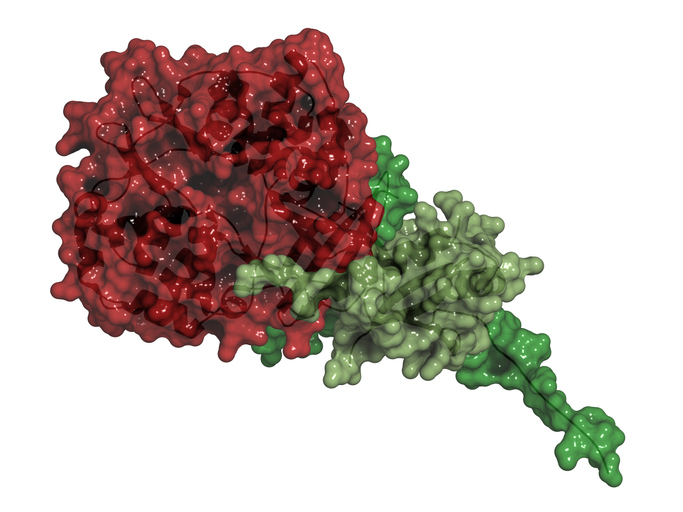
Researchers at the Salk Institute report they might have solved the long-standing mystery around how the protein complex AMPK can both hinder and help cancer.
The lab of Reuben Shaw, Ph.D., director of the Salk Cancer Center and the paper’s senior author, showed that late-stage cancers can trigger AMPK’s cellular recycling signal to cannibalize pieces of the cell, supplying large lung tumors with the nutrients they need to grow. Their study (“Genetic Analysis Reveals AMPK Is Required to Support Tumor Growth in Murine Kras-Dependent Lung Cancer Models”), which appears in Cell Metabolism, suggests that blocking AMPK in some conditions could stop the growth of advanced tumors in the most common type of lung cancer.
“AMPK, a conserved sensor of low cellular energy, can either repress or promote tumor growth depending on the context. However, no studies have examined AMPK function in autochthonous genetic mouse models of epithelial cancer. Here, we examine the role of AMPK in murine KrasG12D-mediated non-small-cell lung cancer (NSCLC), a cancer type in humans that harbors frequent inactivating mutations in the LKB1 tumor suppressor—the predominant upstream activating kinase of AMPK and 12 related kinases. Unlike LKB1 deletion, AMPK deletion in KrasG12D lung tumors did not accelerate lung tumor growth. Moreover, deletion of AMPK in KrasG12D p53f/f tumors reduced lung tumor burden,” write the investigators.
“We identified a critical role for AMPK in regulating lysosomal gene expression through the Tfe3 transcription factor, which was required to support NSCLC growth. Thus, AMPK supports the growth of KrasG12D-dependent lung cancer through the induction of lysosomes, highlighting an unrecognized liability of NSCLC.”
“Our study shows that the same dysfunction in a genetic circuit that causes NSCLC to begin with is necessary for more mature tumor cells to survive when they don’t have enough nutrients,” said Dr. Shaw. “It’s exciting because not only does it solve a genetic ‘whodunnit,’ but it also points to a potential new therapeutic target for a cancer that is often diagnosed very late.”
AMPK acts as a fuel gauge for the cell, overseeing energy input and output to keep the cell running smoothly. AMPK slows down cell growth and changes the cell’s metabolism if the cell’s nutrients are low. Previously, Dr. Shaw discovered that AMPK could halt tumors’ revved-up metabolism, as well as restore normal function to the liver and other tissues in diabetics.
But the lab’s new work suggests that AMPK actually helps large tumors grow. In the current study, the team observed groups of mice with and without the AMPK fuel gauge to see how tumors developed.
“We found that tumors grew much more slowly when AMPK was not present,” said Lillian Eichner, Ph.D., research associate, and the paper’s first author. “That means that AMPK is not always functioning as a tumor suppressor, as we originally thought.”
The team analyzed which genes in tumor cells from the same mouse models were being activated under various conditions. One gene that was particularly active was Tfe3, which is known to activate cellular recycling. It turned out that when tumors became large enough that cells in the middle were too far from easy access to nutrients, AMPK signaled Tfe3 to initiate recycling of cellular materials as nutrients (effectively cannibalizing pieces of the cell) for the tumor to use.
“Previously we were focused on how we could activate AMPK,” said Dr. Eichner. “Now that we’ve identified this mechanism, we can shift to how to inhibit it in certain cancers.”
“We’re excited because more advanced tumors seem to rely on AMPK to survive, and understanding this mechanism means we may be able to treat them,” added Dr. Shaw.











